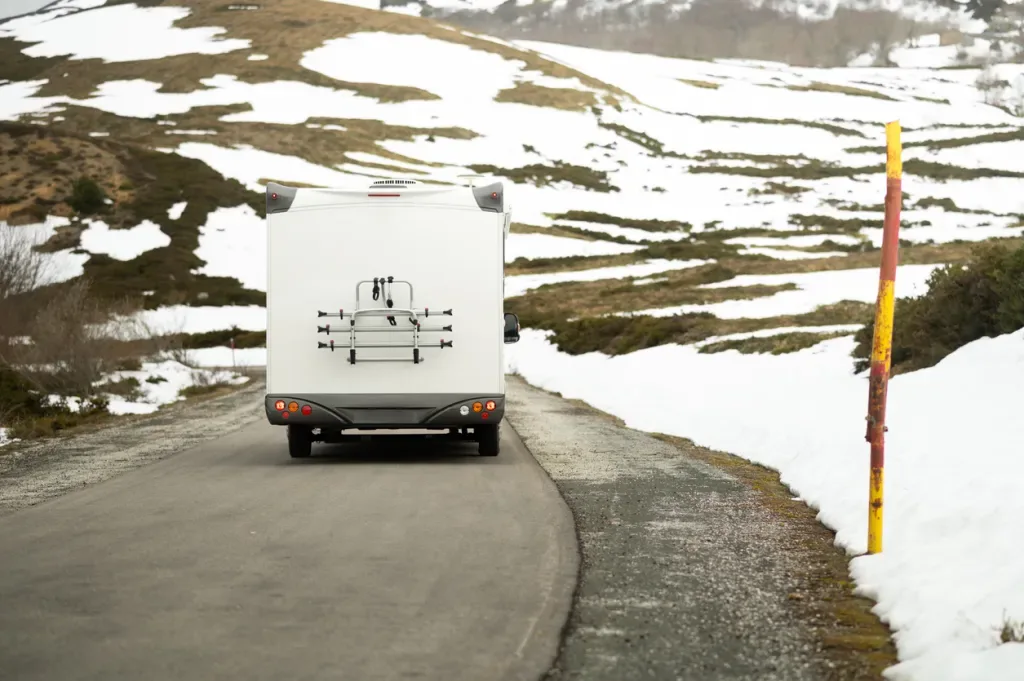Many RV HVAC systems include both a furnace and a heat pump to warm up the rig when the temperatures drop.
However, campers who aren’t familiar with these options may not understand how to maximize their setup.
Today, we’re exploring the world of RV climate control to help you decide when to fire up the furnace or use your heat pump instead.
Let’s burn!

How Does an RV Heat Pump Work?
RV heat pumps are typically part of the onboard HVAC system. They rely on electricity to move warm air from one area to another.
You can think of these devices as reverse AC systems. An air conditioner passes warm air along refrigerant-filled coils. Then, the air travels through condensers that collect any moisture generated.
Heat pumps typically contain a reversing valve that switches this process around. They capture small amounts of warm air from the outside, condense it, and distribute it when you need it.
Pros of this Appliance
One major perk of heat pumps is that they don’t eat up your precious propane supply. While these appliances do require a good amount of electricity, they’re significantly more efficient than other heating methods. If you can hook up to shore power, a 30-amp connection should keep you in business.
Heat pumps can do a great job of maintaining a nice, toasty ambiance in your RV, especially when the temperature outside isn’t frigid. However, some systems automatically kick on your furnace when the difference between indoor and outdoor temps is significant.
In addition to creating a comfortable atmosphere, these devices also help manage humidity. Moisture tends to build up quickly in a well-sealed RV, but heat pumps produce dry air to balance out these levels. That means you’re less likely to run into issues with mold and mildew.
Still chilly? Here’s How To Keep Your RV Warm in Freezing Weather!
Cons of this Appliance
One of the most significant drawbacks of RV heat pumps is that they can’t keep up once the ambient temperature drops below 40 or 45 degrees Fahrenheit. Folks camping in an RV without a furnace must have a backup space heater or other warming device on board.
These systems are relatively efficient when hooked up to shore power. However, using a generator to power your heat pump will quickly negate those savings. Finally, these models typically don’t do much to protect pipes and holding tanks from extreme cold.
How Does an RV Furnace Work?
Many folks consider their RV furnace their primary heat source on the road. In these setups, propane warms the air, which is then forced through ductwork and distributed throughout your rig. Although fuel is the primary driver, you also need electricity to power your furnace’s thermostat, fans, and other electrical elements.
Learn How to Troubleshoot and Repair RV Furnace Problems!
Pros of this Appliance
RV furnaces are powerful enough to raise the indoor temperature despite the frigid air outside. Even when it drops well below freezing, this appliance will keep you nice and toasty.
Unlike many heat pumps, furnaces tend to warm your unit from the ground up. Since heat naturally rises, this makes sense. Additionally, sending hot air through the ductwork within your RV helps avoid freezing pipes, which can be disastrous.
Cons of this Appliance
On the flip side, it’ll cost a lot more to keep your rig warm using your furnace because it requires propane. Of course, the amount of fuel will depend on the size of your camper, the outdoor temperatures, and other factors, but it’s safe to assume the costs will add up quickly. After all, these devices generally use more propane than the average oven, stove, and refrigerator combined.
If you plan to rely on your furnace during winter camping expeditions, be sure to have an extra tank or two of propane on board to stay on the safe side.

When Should I Use My RV Furnace?
When the outdoor temperature is relatively mild, say 45 degrees, you should be able to keep cozy using your RV’s heat pump and an extra layer of clothing. You can consider this your go-to method of warming your rig, especially if you’re hooked up to shore power and paying a flat rate.
However, when the outdoor temperature drops below this range and starts heading toward freezing, you’ll need to crank up your furnace. Even if you’re comfortable with an extra coat and your indoor space heater, you could risk costly damage to your pipes and tanks if they freeze while you’re camping.
If the constant use of so much fuel starts getting to you, you can always pack up and head south for the winter.
Struggling to stay warm? Outfit your RV with a RecPro RV Air Conditioner and Heat Pump!
Is Running Your RV’s Furnace Worth It?
Although RV furnaces burn a lot of propane, they’re an essential appliance you’ll want to make the most of when camping in cold locations. In fact, they can save you from major repairs due to a burst pipe.
We suggest using your RV’s heat pump until the temperature drops, and then decide whether to switch to your furnace or head to a more comfortable destination for the season!
We’ll Help You Find the Best Free Camping in the USA
You should give it a try!
As a matter of fact, these free campsites are yours to enjoy. Every time you pay federal taxes, you’re contributing to these lands.
Become a FREE CAMPING INSIDER and join the 100,000 campers who love to score the best site!
We’ll send you the 50 Best Free Campsites in the USA (one per state). Access the list by submitting your email below: